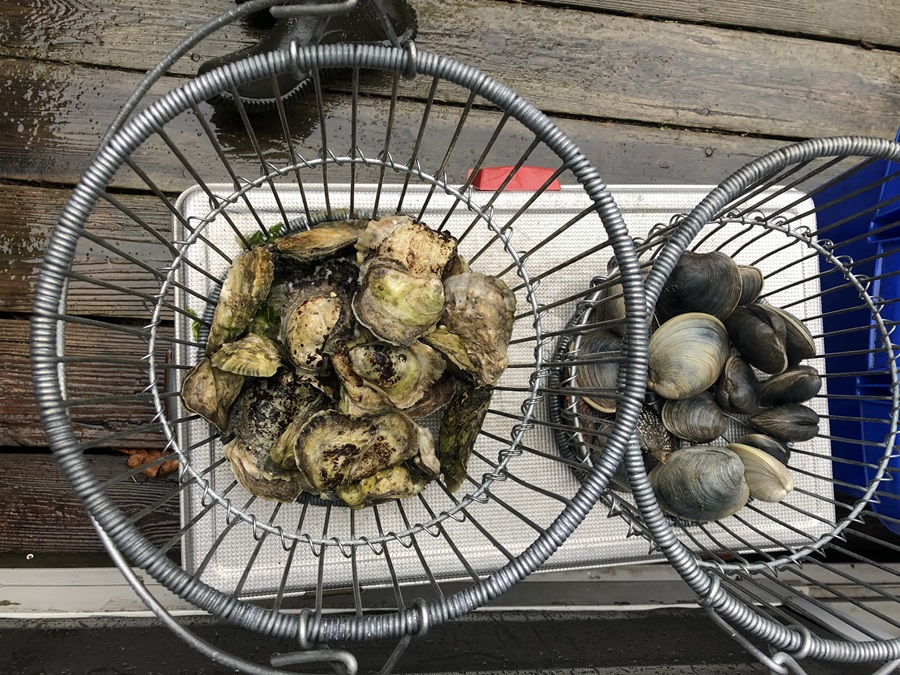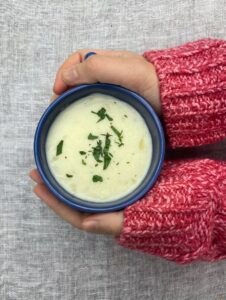After what felt like a glorious extra month of summer, someone hit the fast-forward button rather abruptly last week and we have landed, with a thud and a rustle of leaves, squarely in autumn. Or, for those of us who know better, oyster season.

While Wellfleet gears up for its annual OysterFest, and folks prepare to descend from all over the country for slurping and celebrating, I ring the season in by leafing through my well-loved copy of M.F.K. Fisher’s tiny masterpiece, Consider the Oyster. Each chapter in what I consider to be one of the best beach reads of all time holds its own ecosystem of charm and personality, but the section I refer to over and over again is about oyster stew — as Fisher calls it, “a supper to sleep on.”
Her rules are definitive: it has to be simple, it has to come together in a flash, and it has to be served steaming hot.

“In spite of its simplicity,” Fisher writes, “oyster stew has several formulae, or rather methods of putting together, since the ingredients are almost constant. Rich milk, butter, salt, pepper, and of course, oysters, make up every recipe I ever heard … except one … but the way these things are blended is the cause for long arguments and comparisons and even amicable differences among old friends.”
I have always stood by this in loyal agreement. That is, until I met my version of the one recipe that deviated from it. And that one changed my heart.
The provenance of this recipe is completely unknown to me, which increases its charm, especially after you taste it and have to confess that some rules are meant to be broken. The recipe arrived in my life in my favorite way: someone made it for a friend one winter afternoon, they ate it together, piping hot, out of mugs on a porch, and it stuck with her in the way that a perfectly timed mug of hot food on a cold day tends to do.
That friend was so taken by the stew’s simplicity and its deliciousness that she immediately assembled the ingredients to make it for our Christmas Eve dinner the next night. Nothing persuades me to try something unheard of more than the enthusiasm of people I love to eat with. I adopted this version then and there.
This recipe is “unheard of” mostly because it substitutes coconut milk and olive oil for the usual milk and butter — an alteration that I want to stress sounded very suspicious to me. But there is something about the gentle flavor and silky texture of the coconut milk that makes the oysters, their brine, and the sweetness of the shallots the stars of the show.
Oyster stew, however simple in its construction and preparation, also requires some planning and patience. If someone is willing to shuck a pint of oysters and preserve their liquor to feed you, you can be pretty certain they care about you (even more if they’ve harvested the oysters themselves, which is a particular treat of living here that I may never fully get over).

This recipe is a game-changer if you are trying to avoid dairy or you are cooking for someone who is, because it comes together so correctly that you don’t feel like you are making any concessions or sacrificing a thing.
For me, oyster stew always meant milk and a bit of cream, with a little sherry and buttery toast. Now, I’ll confess, I think about the first mug of this I ever tasted, cupped between my two hands on a blustery night, rich with the scent of garlic and thyme, and how, in the company of friends whose eyes were also twinkling with recognition, our hearts were changed.
7 SOMEONE ELSE’S OYSTER STEW
Makes 4-6 servings
1 pint freshly shucked oysters and their liquor
4 shallots, minced
1 clove garlic, minced (or as many as 6 cloves, if you’re garlic-crazed)
6-ish sprigs thyme
2 14-oz. cans coconut milk
Salt and pepper
Olive oil
- Sauté shallots in a bit of olive oil over medium heat until they soften up and turn translucent. Add garlic and thyme and cook until the garlic is fragrant but not brown. Note that the friend who gave me this recipe is garlic-crazed and suggests a whole head of garlic. That might be a clove too far.
- Add coconut milk and heat until it just starts to boil. Whack the heat way down to a gentle simmer and add the oysters and their liquor. Cook only until the oysters are warmed through and just starting to curl around the edges.
- Taste before you season (oyster liquor is just very special salt water, so you may not need any extra salt) with salt and pepper. Spoon a few oysters into each mug or bowl, then pour the hot soup over them. Serve absolutely immediately to four to six of your favorite and probably skeptical friends. Watch their hearts be changed.
Recipe adapted with permission from Rebecca Orchant’s Simmering (Unbound Edition Press, 2024).
